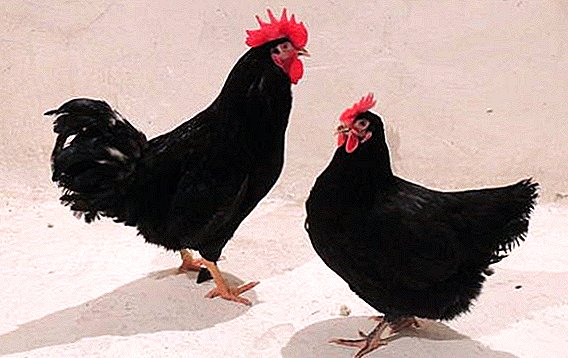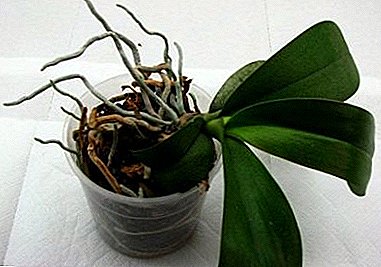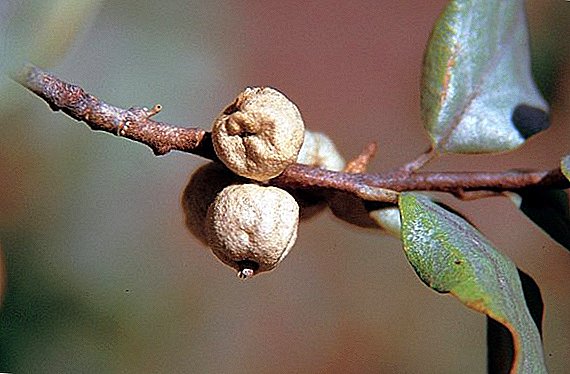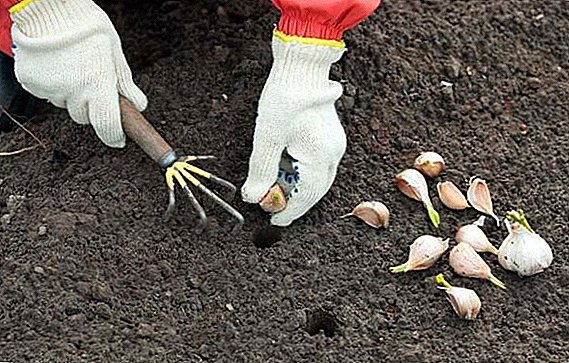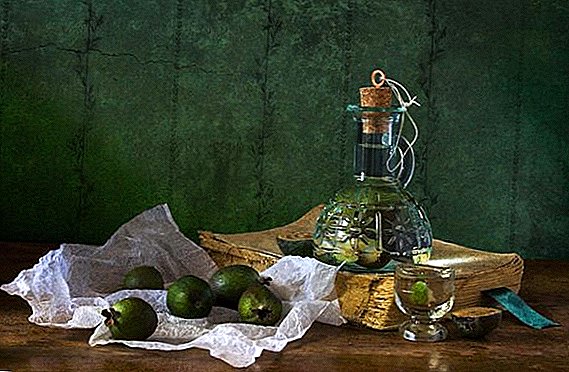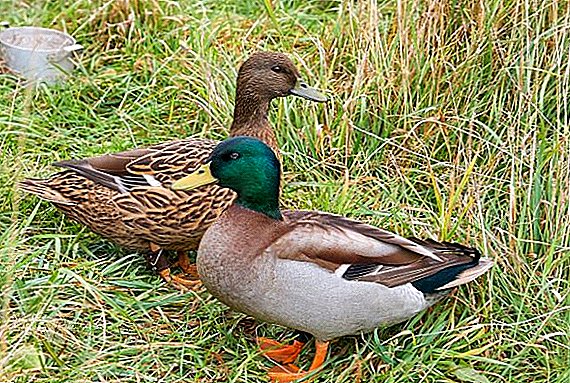 There is a category of birds that are raised not for meat or eggs, but because of their loud and drafty voice — these are duck ducks. They are assistants of hunters in catching wild ducks, attracting them with sound signals. Let's learn more about how to choose, care for and breed such birds.
There is a category of birds that are raised not for meat or eggs, but because of their loud and drafty voice — these are duck ducks. They are assistants of hunters in catching wild ducks, attracting them with sound signals. Let's learn more about how to choose, care for and breed such birds.
Who is the decoy duck
This is a representative of a group of breeds of domesticated ducks that look like wild duck-mallards, which is used to hunt waterfowl birds. During the hunt, such a bird is on the water of a reservoir, and the hunter hides in a camouflaged boat or shelter-hut.
You will be interested to consider the features of breeding wild ducks.
The role of the decoy duck is to beckoning with the sounds and appearance of wild drakes, which the hunter shoots after landing on the water.  The decoy should:
The decoy should:
- have a loud, alluring and thick voice;
- boldly behave in unfamiliar places;
- be energetic and actively attract drakes;
- Do not be afraid of the sound of a gun.
Important! During hunting with decoy ducks, only males are caught - drakes, which makes it most gentle for the general population of waterfowl.
These birds make two main types of sounds, the first of them is called “Quack” (measured monotonous grunting), and the second is called “draft” (a short calling cry towards a flying bird).
On our territory there are several groups of breeds of mallards, which differ in appearance and breeding place: Semenovskaya (Nizhegorodskaya), Tula, Saratovskaya, Penzenskaya, Voronezhskaya. The first two are the most popular and are characterized by excellent qualities. 
Chubary decoy ducks
These birds are one of the varieties of the popular Semenovsky ducks and are characterized by a particularly thick, clean, with a slightly noticeable hoarse voice.
Appearance of Chubarykh:
- plumage - dark, without light areas, with a bluish color of the tail and the inner side of the wings;
- body - low landing, elongated to the tail;
- chest - gray, without a white collar on the neck;
- neck - thin, long;
- the head is dark, monotonous, rounded, lobasty, flattened at the level of the cheeks;
- eyes - no protochina;
- beak - almost black, short, rather narrow;
- the mirror is mild;
- plastron is not pronounced.
 In addition to voice, the character of the breed is also appreciated - calm and docile. These birds easily get used to their host and go into their arms. In addition, the Chubarii work well in the most productive time for hunting - at early dawn and at night, they are able to keep with their "talk" not only a carefree young bird, but also a mature drake.
In addition to voice, the character of the breed is also appreciated - calm and docile. These birds easily get used to their host and go into their arms. In addition, the Chubarii work well in the most productive time for hunting - at early dawn and at night, they are able to keep with their "talk" not only a carefree young bird, but also a mature drake.Read also about how to keep such duck breeds as the Indian runner, Temp, Kayuga, Bashkir, Mulard, Peking (Star-53) and the blue favorite at home.
How to choose
When choosing a mallard you need to look at fairly aggressive individuals who will not be silent in the future during the hunt. They should also have a drab-attracting voice - a loud, not very high, with a slight hoarse.
It is best to buy birds aged 4 to 10 months from parents who are good decoy. If a good specimen older than a year is offered, its young age will help confirm the smooth surface of the beak and the elastic mandibles at the base. In addition, young mallards have smooth paws without large seals and folds.  An important factor when buying is the behavior of the bird. When approaching it, the mallard should behave ominously - hiss, shout and puff feathers: it is from such specimens that quality decoy ducks are obtained.
An important factor when buying is the behavior of the bird. When approaching it, the mallard should behave ominously - hiss, shout and puff feathers: it is from such specimens that quality decoy ducks are obtained.
If the mallard is too flimsy and cautious, then with the proper handling of it, such fear will pass. Choosing a duck, you can try to transplant it into a new place, and if the mallard starts to actively give voice, then she will not be silent on the hunt.
You will probably be interested to know why a duck floats on water, how to properly trim the wings of ducks, what types of ducks are and what diseases are dangerous for ducks.
How to tie
In order to attract the drakes, but not to lose the bait itself, a special device is used - the nogawk. With its help, the bird is tied to a wooden stake so that it cannot fly away.
According to the rules, the bird should be located no less than 15 meters from the hunter. Since it is rather difficult to control it in the reservoir, a well-fixed wooden stake is driven into its bottom, on top of which a circle with a diameter of at least 25 cm is attached at the very edge of the water. If there are bumps nearby that the bird can climb and rest from time to time, the circle does not is required.  On the paw of a decoy duck, a toe is put on and attached to the stake with the help of a nylon rope. The device looks like a bracelet, tightened on the bird's leg, with a ring attached to it, to which one edge of the rope is attached.
On the paw of a decoy duck, a toe is put on and attached to the stake with the help of a nylon rope. The device looks like a bracelet, tightened on the bird's leg, with a ring attached to it, to which one edge of the rope is attached.
Important! The plyus with the foot of a nogawk is a clear sign that the decoy duck was used many times during a hunt. And they can sell it because of unsatisfactory hunting qualities.
Nogavku can be done independently. To do this, use:
- a simple leather bracelet from an old bag, a pair of shoes or another product;
- plastic clamp for electrical wiring;
- improvised means - belt, nylon stocking, gauze bandage.
 Nogawka for decoy duck
Nogawka for decoy duckThe content of decoy ducks at home
To make the decoy duck a good bait for drakes, you should take care of the conditions of its content.
Conditions of detention
- It is better to settle the duck in a specially designed barn - dry and without drafts.
- In the absence of a reservoir nearby, it is worthwhile to organize an artificial pond with a gently sloping bank and water replacement at least once every three days.
- In the cold period, you should organize swimming in a trough in a warm room at least once a week. After it you need to give the birds time to dry, clean and lubricate the plumage, and only then carry them to the barn.
- It is important to provide the right amount of drinking water. To ducks could not swim in these tanks, you should fence them with a grid with large cells, where the bird's head passes.
- It is necessary to arrange a litter of straw, sawdust or shavings in the house. It must be periodically cleaned and changed so that the feathers of the birds do not spoil from dirt and litter.
- Part of the hunters keeps the decorating mallards on loggias and balconies, for which one bird must be allocated at least a square meter at a dwelling height of 70-100 cm.

What to feed
Newborn chicks up to ten days of life are fed with a mixture of feed and nettle with the addition of chopped boiled eggs and cottage cheese. Later, the ducklings are given dry feed for broiler chickens, from time to time adding millet porridge with vegetable oil. In addition, for good digestion, the chicks are given mineral supplements - ground shells, seashell or river sand.
Did you know? "One scientist bought 20 ducks, immediately ordered to chop one of them into pieces, which he fed to other birds. He did the same with the other ducks until one was left, which thus turned out to be a devourer of 19 of his relatives." Such a note was published in a Belgian newspaper by a humorist Cornelissen in order to tease gullible readers. Since then, all the false news began to be called "newspaper ducks."
Adult birds are fed twice a day with the following products:
- chicken feed;
- wheat, millet, barley, oats;
- fish, minced meat, cottage cheese;
- chopped greens - nettle scalded with boiling water, duckweed, etc.
Obesity of ducks should not be allowed, because then they become too lethargic and badly called drakes. Therefore, immediately before the hunting season, the amount of food, especially wheat, should be reduced.
It is believed that ducks are illegible in food, but you should still be aware of what to feed them. Learn how to make a diet for ducks at home.
In winter, ducks are mainly fed with wheat or millet. Once a week, they give germinated grain, chopped greens, cabbage, beets and carrots. In addition, pre-harvested duckweed will add necessary vitamins to the birds ’diet 
Breeding
First you need to arrange a nest for pets in the form of a wooden box with a slotted manhole. Typically, experts advise to settle 3-4 ducks with one drake. At the same time in one nest should be no more than 12 eggs. You should also make sure that they do not independently make nests somewhere in the yard or near the water, otherwise laying may be lost.
Quite often working mallards are obtained from crossing with wild drakes. Although wild animals are difficult to tame, they usually have a sonorous voice, which is passed on to their offspring. However, there are some drawbacks here: firstly, the duration of the working period of such birds is shorter than that of the usual decoyers, and secondly, some individuals are so fearful that they refuse to shout at all during the hunt. 
Box with his own hands
A cage for mallards has a fairly simple design, and it can be done independently.
Did you know? Despite their small size, ducks have more cervical vertebrae than a giraffe! And they are great divers who can go under water to a depth of more than 6 meters to get their food.
Materials
The box can be made of the following materials:
- plywood;
- cardboard;
- wood fibreboard;
- welded mesh with cells 1-2.5 cm

Instruction
Step-by-step instructions for the manufacture of welded mesh boxes:
- Cut the main part with the size of 40x90 cm with small allowances, connect the part with narrow parts and bend it into a rectangular tube (under the box with the size of 20x25x40 cm).
- Cut two ends: deaf 20x25 cm and covering part 22x27 cm.
- Bend the collar and secure with wire.
- Make a wire hook and loop for the closing part.
- Paint the product in green color or use a camouflage net.
- Place a thick cardboard on the bottom so that the duck does not hurt the paws.
- Equip with a convenient handle for transportation.
Read about how to make a duck shed yourself.
In the case of transporting several birds, the box must be larger and partitioned into several compartments. It should also be noted that, despite the convenience of transportation in the car, plywood and wooden boxes quickly become wet and begin to rot. Therefore, in this case it is better to use cardboard, which dries much faster, and its parts are easily replaced.
Hunting has attracted people since ancient times, and one of its most popular varieties is bird hunting. Assault ducks, breeding which with proper care is not difficult, can help the hunter in this exciting and exciting lesson.




